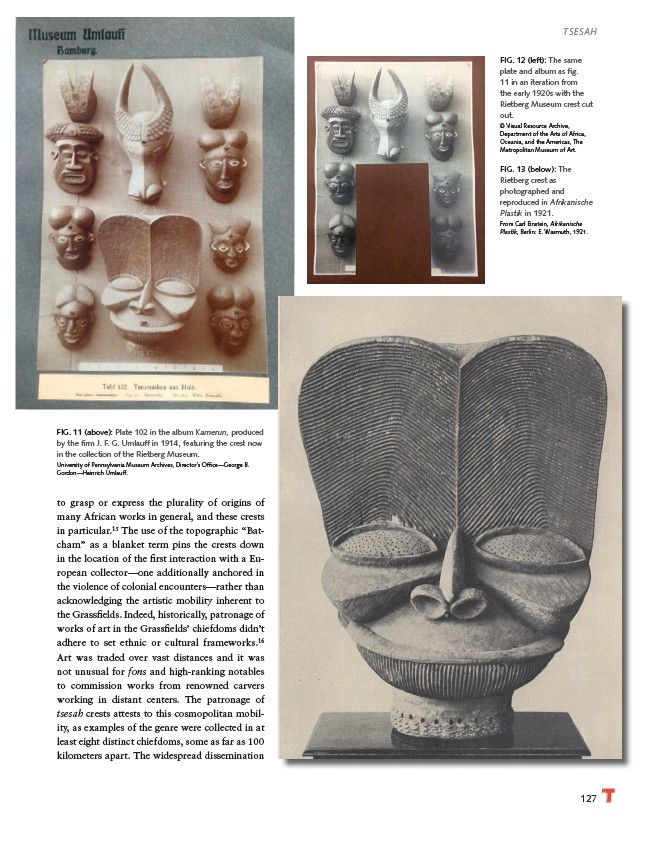
TSESAH
FIG. 12 (left): The same
plate and album as fi g.
11 in an iteration from
the early 1920s with the
Rietberg Museum crest cut
out.
© Visual Resource Archive,
Department of the Arts of Africa,
Oceania, and the Americas, The
Metropolitan Museum of Art.
FIG. 13 (below): The
Rietberg crest as
photographed and
reproduced in Afrikanische
Plastik in 1921.
From Carl Einstein, Afrikanische
Plastik, Berlin: E. Wasmuth, 1921.
127
FIG. 11 (above): Plate 102 in the album Kamerun, produced
by the fi rm J. F. G. Umlauff in 1914, featuring the crest now
in the collection of the Rietberg Museum.
University of Pennsylvania Museum Archives, Director’s Offi ce—George B.
Gordon—Heinrich Umlauff.
to grasp or express the plurality of origins of
many African works in general, and these crests
in particular.15 The use of the topographic “Batcham”
as a blanket term pins the crests down
in the location of the fi rst interaction with a European
collector—one additionally anchored in
the violence of colonial encounters—rather than
acknowledging the artistic mobility inherent to
the Grassfi elds. Indeed, historically, patronage of
works of art in the Grassfi elds’ chiefdoms didn’t
adhere to set ethnic or cultural frameworks.16
Art was traded over vast distances and it was
not unusual for fons and high-ranking notables
to commission works from renowned carvers
working in distant centers. The patronage of
tsesah crests attests to this cosmopolitan mobility,
as examples of the genre were collected in at
least eight distinct chiefdoms, some as far as 100
kilometers apart. The widespread dissemination